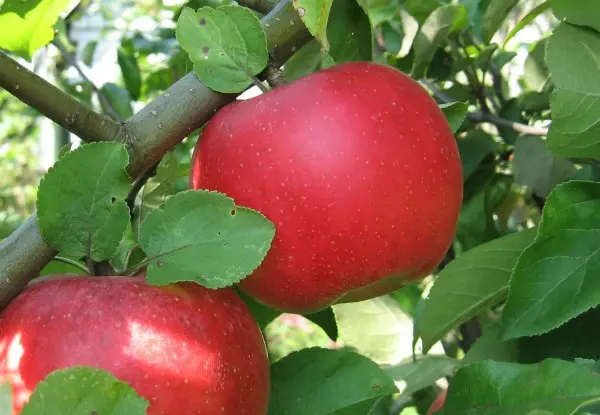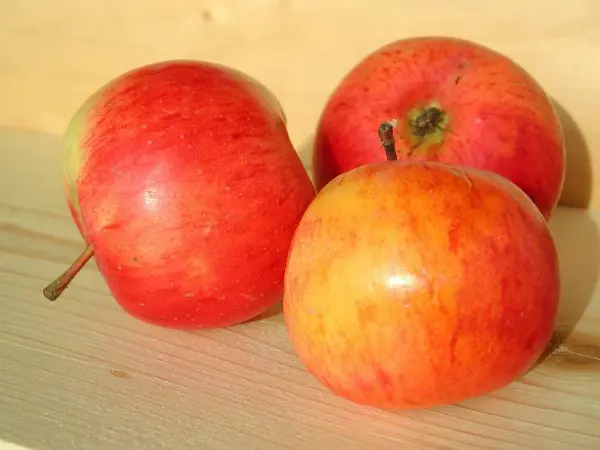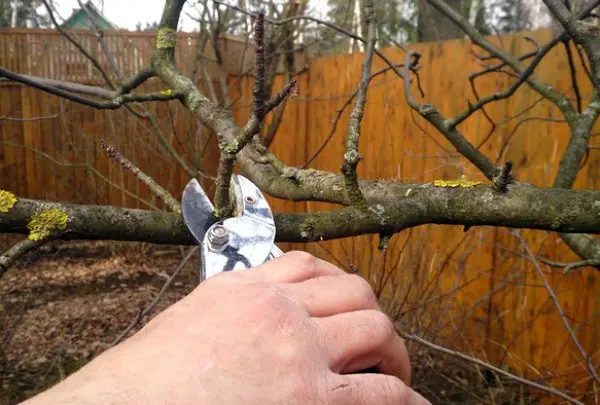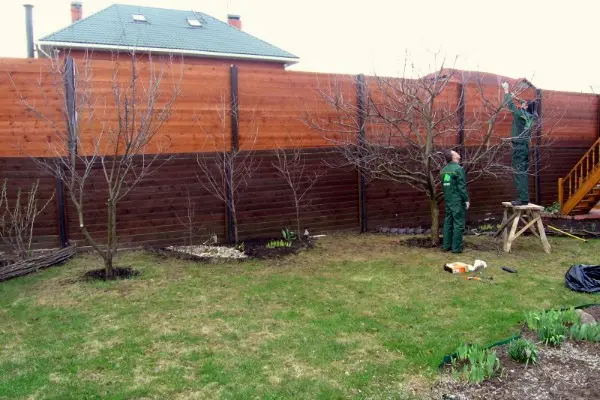Contents
“Auxis” – an apple tree variety with such a beautiful and unusual name is widely cultivated not only in its homeland, in Lithuania, but also in many European countries with a temperate continental and northern climate. Such popularity of the variety is explained by the excellent dessert taste of fruits and other positive characteristics: high yield, resistance to frost, diseases. The Auxis apple tree is a little capricious and demanding on conditions, but these shortcomings are more than compensated for by the high taste and commercial qualities of fragrant apples.
Description and characteristics
The Auxis apple variety is considered to be an autumn-winter apple variety, since fruit ripening and harvesting takes place in mid-September, and the consumer season begins only in December. This variety was bred at the Lithuanian Research Institute of Horticulture by crossing the Mackintosh variety with the equally well-known Grafenstein Red variety. Apple trees are perfectly adapted to low temperatures and feel comfortable in the northwestern as well as northern regions.
The apple tree of this variety is of medium height (4–6 m), the crown is compact, rounded, medium thickened. The flowering of the tree begins in the second half of May. The buds have a pinkish color, as they bloom, they become white with a slight pinkish tint. The variety is characterized by a mixed type of fruiting (fruits are formed on all branches). These apple trees are not self-fertile – for cross-pollination they need other varieties with the same flowering period as theirs.

The variety “Auxis” is well adapted to low temperatures, tolerates severe frosts and long winters without problems. Another advantage of the apple tree is its high resistance to fungal diseases, in particular to scab. The early fruiting of the apple tree, as well as the yield, depends on the growing conditions: in a comfortable climate, the apple tree begins to bear fruit in the 4th year of life, in harsh conditions, fruiting begins from the 5–6th year of life.
The variety is considered high-yielding, but it is characterized by irregular fruiting. No, the tree does not need an annual respite, like many apple trees, just the amount of harvest from year to year may differ – if one year was very productive, then next year there will be much less fruit. Also, the yield largely depends on the growing conditions and care (fertilizing, pruning). It is very good if an apple tree of a different variety grows next to the tree, which can pollinate it.
The description of the fruits, perhaps, should begin with the fact that they are very beautiful and bright. In removable maturity, the apples are slightly greenish with a slight blurry blush, but by the time they are fully ripe (after 1,5–2 months), their main color becomes light yellow, and an intense bright crimson blush spreads over the entire surface.

Apples of this variety are medium in size (100–180 g), have a regular rounded shape, slightly flattened in height, without ribbing. The peel is smooth, dense, rusty at the stalk, covered with a wax coating. Large subcutaneous dots are visible under the skin. Apples retain their marketable appearance for a long time, are perfectly transported, but quickly fall off the apple tree, so you should harvest on time.
Taste qualities of fruits
Not only gardeners, but also ordinary people have heard about the unique taste of Auxis apples. These fruits have a delicious dense, but very juicy cream-colored flesh with a pleasant fine grain. At the beginning of the tasting, a sweet dessert taste is felt, which is gradually saturated with sour notes, and ends with a slight sourness in the aftertaste. Such an unusual sequence of taste qualities is the real highlight of the variety, for which consumers love it so much. Ripe apples exude an amazing apple aroma, which, combined with a pleasant dessert taste, deserved a fairly high tasting score of 4,5 points.

Features of care
An apple tree of this variety does not need any special care, but the main activities, including regular feeding and pruning, are necessary for good fruiting. In extreme heat, the tree needs to be watered, as it does not accept the drying of the soil. As for feeding the seedling, fertilizer should not be applied in the first year. This year, all care consists in loosening the soil around the trunk, removing weeds and abundant watering.

A young apple tree is watered at the rate of 1 bucket of water / 1 year of tree life. It is necessary to water not under the trunk, but along the perimeter of the crown. In the first year, the tree is watered frequently, as the soil dries. In the future, three times a day will be enough for the entire growing season: the first time at the beginning of summer (provided that the soil is dry), the second – during the ripening of apples and the third – in late autumn.

The variety is quite demanding on top dressing, the crop yield to some extent depends on this. It is desirable to apply fertilizers according to the following scheme: in the fall (embedded in the ground when digging), superphosphate, potassium, compost are used, and in spring – nitrogen. The nitrogen mixture should be divided into two times: 2/3 should be added in early spring, before bud break, the rest – at the end of flowering.
In the first 3 years, while the apple tree is small, fertilizers are planted to a depth of 15-20 cm, in subsequent years – to a depth of 40-45 cm along the crown perimeter no closer than 1 m around the trunk.
The most important stage in care is the formation of the crown. Since the variety is prone to irregular fruiting, pruning to rejuvenate the branches can increase the number of ovaries. Spring pruning in late March – early April limits the growth of old branches, which leads to an increase in the number of flower buds. This procedure reduces the frequency of fruiting and improves the quality of the fruit.

In addition, proper pruning helps protect the apple tree from many diseases and pest invasions. “Proper” pruning implies the complete elimination of all diseased and damaged branches, as well as those that create blackout and interfere with the normal ripening of the fruit. Edge pruning is used for branches whose age does not exceed 3 years, it is recommended to remove older branches completely. Anti-aging pruning can be carried out not only in spring, but also in autumn after the foliage has fallen.
In autumn, it is recommended to treat the trunks with lime (whitewash) – this measure will protect the tree from wintering insects and rodents.
As already mentioned, the variety is highly frost-resistant, however, when grown in a cold climate, it is recommended to mulch the tree for the winter.
As a mulch, you can use dry foliage, coniferous needles, and also spread compost or humus on the surface of the tree trunks. Organics perfectly gives off heat, which will help the apple tree survive severe frosts.
Video “Apple variety Auxis”
The video will tell about the features of Auxis apples and demonstrate how the fruiting of this apple tree occurs.









